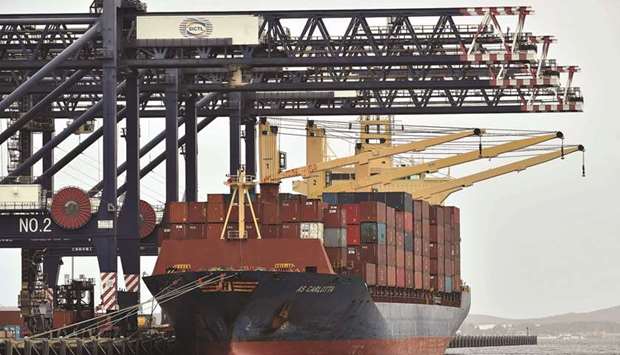Australia’s economy bounced back to growth in the three months through September with households resuming spending as restrictions eased, underscoring the Reserve Bank’s view that the nation has turned the corner.
Gross domestic product expanded 3.3% from the second quarter, when it tumbled by 7%, the Australian Bureau of Statistics said in Sydney yesterday. Economists had forecast a 2.5% expansion. From a year earlier, the economy shrank 3.8% versus an estimated 4.4% contraction.
“We are now expecting GDP growth to be solidly positive in both the September and December quarters,” RBA Governor Philip Lowe told a parliamentary panel in Canberra yesterday. “These figures, though, cannot hide the reality that the recovery will be uneven and bumpy and that it will be drawn out. Some parts of the economy are doing quite well, but others are in considerable difficulty.”
The renewed expansion shows how resilient the economy was outside the southeastern state of Victoria, which was under one of the world’s toughest lockdowns for much of the period. The RBA and government delivered significant stimulus early in the pandemic to help households and firms.
The Australian dollar rose after the report, before edging back down to trade at 73.69 US cents in Sydney.
“Australia’s recession has ended, but the effects of the recession will take a long time to unwind. The rebound in 3Q recovered around 40% of the decline in output over 1H 2020, an impressive outcome given 25% of the economy remained locked down. The continued easing of restrictions over 4Q means the kick to growth from the normalisation of activity will be a key driver of GDP outcomes in 4Q 2020 and 1Q 2021. A recovery in private sector investment will be key to sustained growth beyond that point”, says James McIntyre, economist at Bloomberg.
Victoria, which accounts for about 25% of GDP, was hit hard by efforts to contain a renewed outbreak of the virus. Its lockdown slashed A$100mn ($73.8mn) a day from activity and resulted in an average of 1,200 daily job losses across the state during August and September, Treasury estimated. “Victoria’s final demand fell 1%, the only state to record a decline, driven by decreases in household spending and investment,” the ABS said. “More stringent restrictions associated with the second lockdown resulted in a 9.8% fall through the year. Household spending declined 1.2% in September quarter.”
Australia’s unemployment rate currently stands at 7% and the central bank expects it to climb closer to 8% as more Victorians return to the labour market hunting for jobs. At the same time, the return to growth brings an end to Australia’s first technical recession – defined as two consecutive quarters of contraction – in nearly 29 years.
Net exports subtracted 1.9 percentage points from GDP, the largest detraction since September quarter 1980. The savings rate eased to 18.9.% from an upwardly revised 22.1% in the second quarter, as government cash handouts and a dearth of spending options prompted households to repair their balance sheets. Compensation of employees rose 2.3% as hours worked increased.
Australia’s record run of avoiding two consecutive quarters of negative GDP had included avoiding recessions during the 1997 Asian Financial Crisis, the Dot-Com Bubble and the 2008 global financial crisis. With rates now near zero and the central bank running a quantitative easing program, it has rejoined the rest of the developed world in its policy struggles.
The RBA and government are working in tandem to try to support the economy, with the former last month enacting further stimulus that included reducing interest rates to 0.10% and initiating a A$100bn bond-buying programme.
“The board will continue to review the details of this package at our future meetings. We are prepared to do more, if that is required,” Lowe told lawmakers. “Having said that, we are still of the view that a negative policy interest rate in Australia is extraordinarily unlikely, with any benefits being outweighed by the costs.”
Wednesday’s report showed private investment fell 0.2% as increased housing investment activity was offset by weaker business investment.
“Ownership transfer costs increased 21.4%, as housing market activity rebounded,” the ABS said. “Renovations and home improvements activity drove a 5.1% rise in alterations and additions.”
Australia has benefited from China’s stimulus to revive its economy this year, which has fuelled commodity prices, helping the country to its sixth successive quarterly current-account surplus.
Yet the bonanza with China, which takes about 35% of Australian exports, is under a cloud as relations between the two countries deteriorate. Beijing has slapped tariffs on some imports from Down Under, is refusing to take calls from ministers in Canberra, while gloating over alleged Australian war crimes.

Workers load containers on a cargo ship at Port Botany in Sydney yesterday. Australia’s economy bounced back to growth in the three months through September with households resuming spending as restrictions eased, underscoring the central bank’s view that the nation has turned the corner.

